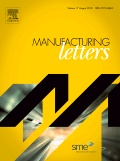
Manufacturing Letters
Scope & Guideline
Empowering Insights in Industrial Engineering.
Introduction
Aims and Scopes
- Additive Manufacturing Techniques:
The journal covers a wide range of additive manufacturing processes, including laser powder bed fusion, directed energy deposition, and material extrusion, emphasizing both established and novel techniques. - Material Development and Characterization:
Research published in this journal frequently explores the development of new materials tailored for additive manufacturing, including alloys, composites, and ceramics, along with their mechanical and thermal properties. - In-situ Monitoring and Process Control:
The journal emphasizes the importance of in-situ monitoring techniques for additive manufacturing processes, focusing on methodologies that improve quality control and reduce defects during production. - Microstructure and Mechanical Performance:
A key focus area is the relationship between processing parameters, microstructural evolution, and the resulting mechanical properties of additively manufactured components, providing insights into performance optimization. - Applications and Case Studies:
The journal includes practical applications of additive manufacturing technologies across various industries, demonstrating the technology's versatility and potential for innovation.
Trending and Emerging
- Integration of Machine Learning and AI:
There is an increasing trend towards the application of machine learning and artificial intelligence in additive manufacturing processes, aimed at optimizing parameters, predicting outcomes, and enhancing process controls. - Advanced Material Composites:
Research into novel composite materials that enhance the properties of additive manufactured products is gaining traction, highlighting the importance of tailoring materials for specific applications. - Sustainability and Recycling in Additive Manufacturing:
A growing number of studies are focusing on sustainable practices within additive manufacturing, including the recycling of materials and the development of eco-friendly processes, in response to global sustainability challenges. - Multi-Material and Hybrid Manufacturing Techniques:
The exploration of multi-material additive manufacturing and hybrid techniques that combine different manufacturing methods is emerging as a significant area of research, highlighting the potential for creating complex and functional components. - In-Situ Characterization Techniques:
There is a notable increase in the use of in-situ characterization techniques such as X-ray imaging and acoustic monitoring to study the additive manufacturing process as it occurs, providing real-time insights into material behavior and process dynamics.
Declining or Waning
- Traditional Manufacturing Comparisons:
There has been a noticeable decrease in studies comparing additive manufacturing to traditional manufacturing methods, as the field increasingly focuses on optimizing additive processes rather than contrasting them with conventional techniques. - Basic Process Descriptions:
Research articles that solely provide basic descriptions of additive manufacturing processes are becoming less common, as the journal shifts towards more advanced studies that delve into specific parameters, innovations, and enhancements. - Generalized Material Studies:
Papers that discuss broad categories of materials without a specific focus on their application or performance in additive manufacturing are diminishing, as the trend moves towards targeted research that addresses specific material challenges and innovations.
Similar Journals

KOVOVE MATERIALY-METALLIC MATERIALS
Cultivating Knowledge in the World of Metallic MaterialsKOVOVE MATERIALY-METALLIC MATERIALS, published by REDAKCIA KOVOVE MATERIALY, is a prominent journal embedded within the field of materials science, focusing particularly on metallic materials. With a history dating back to 1968, this Slovakian journal has made significant contributions to the understanding of materials chemistry, mechanical engineering, and the mechanics of materials. While currently classified in the Q4 category for Materials Chemistry and Mechanical Engineering, and Q3 for Metals and Alloys, it aims to provide a platform for high-quality research and novel findings in these domains. Furthermore, the journal is indexed within Scopus, reflecting its engagement with the global scientific community and its role in disseminating pivotal studies. Researchers, professionals, and students will find crucial insights and developments in the field, making it a valuable resource for those seeking to enhance their understanding of metallic materials and their applications.
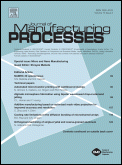
Journal of Manufacturing Processes
Unveiling Cutting-edge Research in ManufacturingThe Journal of Manufacturing Processes, published by Elsevier Science Ltd, serves as a premier platform for researchers, professionals, and students engaged in the fields of Industrial and Manufacturing Engineering as well as Management Science and Operations Research. With an impressive Q1 ranking across multiple categories for 2023, this journal not only showcases innovative research but also provides insights into strategic management and operational excellence within the manufacturing sector. Covering an extensive timeline from 1999 to 2024, the journal has solidified its position within the academic community, consistently ranking in the top percentile across various Scopus categories. Although it does not offer open access, the journal maintains a commitment to disseminating high-quality, peer-reviewed research that drives advancements in manufacturing processes. Located in the Netherlands, the journal aims to foster collaboration and knowledge sharing among scholars and industry experts alike, making it an indispensable resource for anyone dedicated to the advancement of manufacturing science.
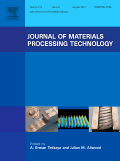
JOURNAL OF MATERIALS PROCESSING TECHNOLOGY
Shaping the Landscape of Manufacturing InnovationJOURNAL OF MATERIALS PROCESSING TECHNOLOGY, published by ELSEVIER SCIENCE SA, is a premier international journal dedicated to the dissemination of cutting-edge research in the field of materials processing. With an impact factor indicative of its high academic quality, this journal features a diverse range of topics, including ceramics, composites, metals, and manufacturing technologies, thereby inspiring innovations within its community. As a recognized Q1 journal across multiple categories—including Ceramics and Composites, Computer Science Applications, Industrial and Manufacturing Engineering, and Modeling and Simulation— it ranks among the top in its field. The journal's rigorous peer-review process ensures the publication of only the most significant and relevant studies, supporting researchers, professionals, and students in advancing their knowledge and expertise. With its commitment to excellence, the JOURNAL OF MATERIALS PROCESSING TECHNOLOGY remains a vital resource for those aiming to push the boundaries of materials science and engineering.
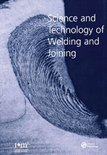
SCIENCE AND TECHNOLOGY OF WELDING AND JOINING
Pioneering Innovations in Joining TechniquesScience and Technology of Welding and Joining, published by SAGE Publications Inc, is a leading academic journal dedicated to advancing knowledge in the fields of condensed matter physics and materials science. With an impressive impact factor that highlights its influence, this journal serves as a premier platform from 1996 to 2024, facilitating innovative research in welding and joining technologies. Situated in the United Kingdom, the journal holds prestigious Q1 rankings in both condensed matter physics and miscellaneous materials science categories, underscoring its commitment to excellence and contribution to the scientific community. As a resource for researchers, professionals, and students alike, it offers insights into the latest developments in the field, ensuring that cutting-edge studies and applications are readily accessible to its audience. Despite not being an open-access journal, its contributions remain invaluable, bridging theoretical advancement with practical implications in welding and materials engineering.
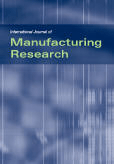
International Journal of Manufacturing Research
Pioneering Insights in Manufacturing and EngineeringThe International Journal of Manufacturing Research, published by InderScience Enterprises Ltd, serves as a pivotal platform for disseminating innovative research in the field of manufacturing and industrial engineering. With an ISSN of 1750-0591 and E-ISSN of 1750-0605, this journal commits to fostering advancements in areas including manufacturing technologies, control systems, and simulation methodologies. It has established itself within the academic community despite its Q4 category rankings in Computer Science Applications and Control and Systems Engineering for 2023, and it holds a notable position in Industrial and Manufacturing Engineering with a Q3 ranking. The journal reflects the dynamic nature of the manufacturing sector, providing a crucial forum for researchers, professionals, and students to contribute their findings and insights. Although it does not currently offer open access options, its comprehensive scope from 2006 to 2020 and 2022 to 2024 emphasizes its commitment to addressing contemporary challenges in manufacturing and technology. Engaging with this journal can enhance understanding and drive innovation among industry experts and scholars alike.
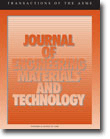
JOURNAL OF ENGINEERING MATERIALS AND TECHNOLOGY-TRANSACTIONS OF THE ASME
Exploring innovative solutions for a sustainable future.JOURNAL OF ENGINEERING MATERIALS AND TECHNOLOGY-TRANSACTIONS OF THE ASME is a premier journal published by the American Society of Mechanical Engineers (ASME), dedicated to advancing the field of engineering materials and technology. With an ISSN of 0094-4289 and E-ISSN 1528-8889, this journal has provided invaluable insights since its inception in 1973. Operating from its headquarters in New York, United States, it serves a global audience of researchers, professionals, and students alike. The journal is recognized for its rigorous peer-review process and its commitment to disseminating high-quality research, currently holding a Q3 quartile ranking across multiple categories including Condensed Matter Physics, Materials Science, Mechanical Engineering, and Mechanics of Materials. With a focus on exploring innovative materials and their applications, it aims to foster collaboration and discovery in the engineering community. Although it is not an open-access journal, it continues to play a vital role in shaping the future of engineering materials research up to 2024. Researchers and practitioners will find in this journal a significant platform to support the development and understanding of engineering materials, making contributions that resonate through academia and industry.

Integrating Materials and Manufacturing Innovation
Driving Excellence in Industrial and Materials Innovation.Integrating Materials and Manufacturing Innovation, published by SPRINGER HEIDELBERG, is a leading journal in the fields of Industrial and Manufacturing Engineering and Materials Science. Since its inception in 2012, this journal has established itself as a pivotal platform for disseminating cutting-edge research that bridges the gap between materials science and advanced manufacturing practices. With an impressive impact factor and consistent ranking within the Q1 and Q2 quartiles, it serves as an essential resource for academics and professionals alike, fostering innovation and collaboration in the industry. The journal aims to publish high-quality original research, reviews, and case studies that address contemporary challenges and advancements in materials and manufacturing integration. Researchers, students, and industry experts seeking to stay at the forefront of their fields will find this journal an invaluable addition to their academic and professional libraries.

ADVANCED MATERIALS & PROCESSES
Advancing Knowledge in Materials Science and EngineeringADVANCED MATERIALS & PROCESSES is a vital resource for professionals and researchers in the fields of Materials Science, Mechanical Engineering, and Mechanics of Materials, published by ASM International, a renowned leader in material science publishing. Since its inception in 1985, this journal has aimed to disseminate cutting-edge research and innovative developments in advanced materials usage and processing techniques, contributing to the advancement of engineering applications. Despite its current Q4 quartile ranking in its respective categories, the journal endeavors to elevate the discourse within the field by providing a platform for high-quality articles, reviews, and case studies. Subscribers can benefit from insights into the latest trends and technologies that shape the materials landscape, although the journal is not open access. With its broad coverage and commitment to supporting the academic and professional community, ADVANCED MATERIALS & PROCESSES remains an essential publication for anyone invested in the future of materials innovation.
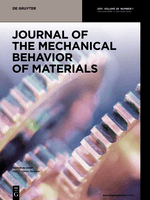
JOURNAL OF THE MECHANICAL BEHAVIOR OF MATERIALS
Innovating the Future of Materials ScienceJOURNAL OF THE MECHANICAL BEHAVIOR OF MATERIALS, published by DE GRUYTER POLAND SP Z O O, is a prominent open-access journal in the field of materials science and mechanics, dedicated to facilitating the dissemination of high-quality research findings since 2019. With an ISSN of 0334-8938 and an E-ISSN of 2191-0243, this journal provides a platform for researchers, professionals, and students to explore the mechanical behaviors of various materials, crucial for advancing engineering and scientific applications. The journal's impact is evidenced by its impressive rankings, including Q2 status in both Materials Science (miscellaneous) and Mechanics of Materials as of 2023. With a Scopus rank placing it in the top-half of indexed journals, the JOURNAL OF THE MECHANICAL BEHAVIOR OF MATERIALS is a vital resource for anyone looking to stay at the forefront of material behavior research. Based in Germany, it serves the global academic community while catering to the evolving needs of industry practitioners through its comprehensive open-access model.
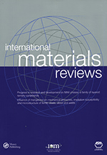
INTERNATIONAL MATERIALS REVIEWS
Connecting Theory and Practice in Materials EngineeringINTERNATIONAL MATERIALS REVIEWS, published by SAGE Publications Inc, is a leading journal dedicated to the comprehensive analysis of contemporary research in the fields of materials chemistry, mechanical engineering, mechanics of materials, and the study of metals and alloys. With an impressive impact factor and a Q1 ranking across multiple categories such as Materials Chemistry and Mechanical Engineering in 2023, it ranks amongst the top journals for innovative materials research. The journal has a long-standing history since its inception in 1987 and continues to serve as a crucial resource for academics and professionals alike. Although it is not open access, it is renowned for its rigorous peer-review process and its commitment to disseminating high-quality materials science research globally. Researchers, students, and industry professionals benefit greatly from the journal's insightful reviews, both for the advancement of theoretical knowledge and practical applications within the fast-evolving materials field.